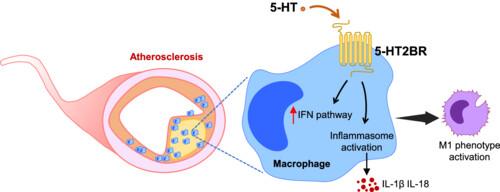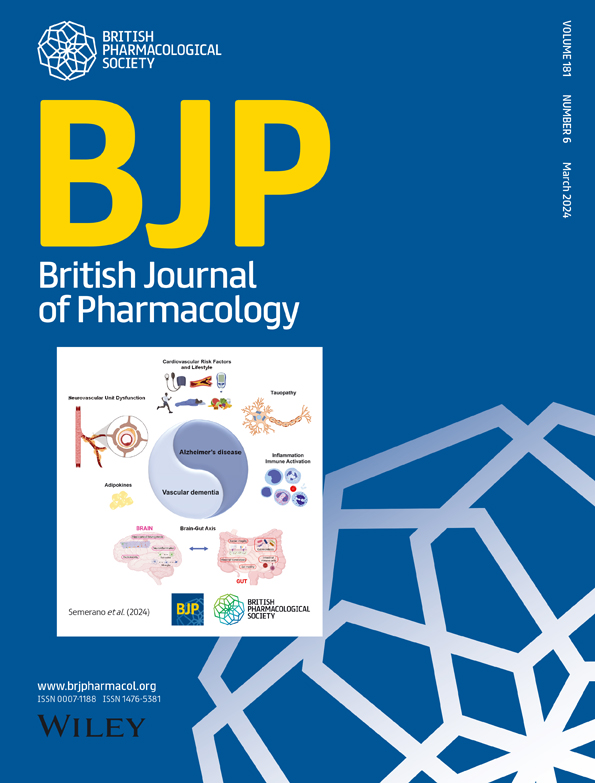Deficiency of 5-HT2B receptors alleviates atherosclerosis by regulating macrophage phenotype through inhibiting interferon signalling
Abstract
Background and Purpose
Elevated levels of 5-HT have been correlated with coronary artery disease and cardiac events, suggesting 5-HT is a potential novel factor in the development of atherosclerotic cardiovascular disease. However, the underlying pathological mechanisms of the 5-HT system in atherosclerosis remain unclear. The 5-HT2B receptor (5-HT2BR), which establishes a positive feedback loop with 5-HT, has been identified as a contributor to pathophysiological processes in various vascular disorders. In this study, we investigated the immunological impact of 5-HT2BR in atherosclerosis-prone apolipoprotein E-deficient (ApoE−/−) mice.
Experimental Approach
Plasma levels of 5-HT were measured in mice using an ELISA kit. Atherosclerotic plaque formation, macrophage infiltration and inflammatory signalling were assessed in ApoE−/− mice by employing both pharmacological inhibition and genetic deficiency of 5-HT2BR. Inflammasome activation was elucidated using peritoneal macrophages isolated from 5-HT2BR-deficient mice.
Key Results
An upregulation of 5-HT2BR expression was observed in the aortas of ApoE−/− mice, exhibiting a strong correlation with the presence of macrophages in plaques. Atherosclerosis was attenuated in mice through pharmacological inhibition and genetic deficiency of 5-HT2BR. Additionally, a significant reduction in atherosclerotic plaque size was achieved through bone marrow reconstitution with 5-HT2BR-deficient cells. 5-HT2BR-deficient macrophages showed attenuated interferon (IFN) signalling, NLRP3 inflammasome activation, and interleukin-1β release. Moreover, macrophages primed with 5-HT2BR deficiency displayed an anti-inflammatory phenotype.
Conclusion and Implications
These findings support the hypothesis that 5-HT2BR in macrophages plays a causal role in the development of atherosclerosis, revealing a novel perspective for potential therapeutic strategies in atherosclerosis-related diseases.
LINKED ARTICLES
This article is part of a themed issue Drugs and Drug Targets in Metabolic and Chronic Inflammatory Diseases. To view the other articles in this section visit http://onlinelibrary.wiley.com/doi/10.1111/bph.v182.20/issuetoc






 求助内容:
求助内容: 应助结果提醒方式:
应助结果提醒方式:


